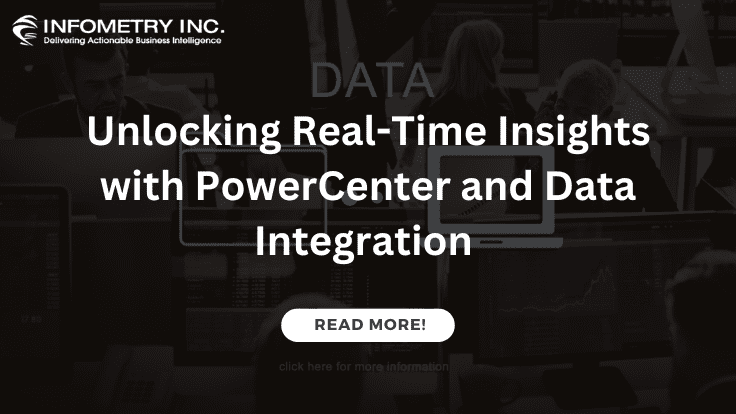
Unlocking Real-Time Insights with PowerCenter and Data Integration
July 3, 2023
How to Scale Your Customer Service with Salesforce and Chatbots?
July 12, 2023Informatica MDM, representing Master Data Management, is a comprehensive solution that enhances business data management. It is a crucial tool for organizations to synchronize their systems and information effectively. Informatica MDM enables companies to maintain a robust data infrastructure by acting as a bridge between systems and business data. This solution ensures data safety and security, facilitating the success and growth of organizations. Additionally, Informatica MDM promotes innovative business ideas, empowering organizations to refine their strategies and thrive in their respective industries.
What is Informatica MDM?
Informatica MDM (Master Data Management) is a comprehensive software solution that helps organizations govern and manage their critical master data across various systems and applications. Master data refers to the vital business elements shared across an organization, such as customer, product, supplier, and other reference data.
Informatica MDM enables companies to create a single, accurate, and consistent view of their master data by consolidating data from multiple sources, resolving any conflicts or inconsistencies, and establishing data governance policies. It provides a centralized hub where master data can be managed, enriched, and synchronized across different systems and applications.
Key features and capabilities of Informatica MDM include:
Data Integration
Informatica MDM can integrate data from diverse systems and applications, such as CRM, ERP, and legacy systems, ensuring a unified and reliable view of master data.
Data Quality
The software includes data cleansing and validation capabilities to improve data quality by identifying and fixing errors, inconsistencies, and duplicates.
Data Governance
Informatica MDM helps establish data governance policies and processes to ensure the ongoing management, stewardship, and compliance of master data. It enables data stewards to define data rules, manage data quality, and resolve data-related issues.
Data Consolidation
Informatica MDM allows organizations to consolidate master data from various sources into one authoritative source, eliminating data silos and providing a holistic data view.
Data Synchronization
The software facilitates the synchronization of master data across different systems, ensuring consistent and up-to-date information throughout the enterprise.
Data Security
Informatica MDM offers robust security features to protect sensitive master data, ensuring appropriate access controls and data privacy compliance.
Informatica MDM is widely used across industries to improve data quality, enhance operational efficiency, enable better decision-making, and support initiatives such as customer 360, supplier management, regulatory compliance, and data-driven analytics.
Informatica MDM Process
The process of implementing Informatica MDM typically involves several stages and activities. Here’s a general overview of the Informatica MDM process:
Planning and Analysis:
- Define the scope and objectives of the MDM implementation.
- Identify the master data domains to be managed, such as customer, product, or supplier.
- Conduct a thorough analysis of existing data sources, systems, and data quality issues.
- Identify key stakeholders and establish a governance framework for MDM.
Data Modeling and Design:
- Define the data model and schema for the master data entities.
- Determine the relationships, attributes, and hierarchies within the data model.
- Design the integration architecture for connecting to source systems and data integration.
Data Integration and Consolidation:
- Extract data from source systems using connectors or APIs.
- Cleanse and standardize the data to ensure data quality.
- Match and merge similar records to create a single view of the master data.
- Resolve data conflicts and establish rules for data consolidation.
Data Quality and Governance:
- Define data quality rules and validation processes.
- Establish data governance policies, roles, and responsibilities.
- Implement workflows for data stewardship and approval processes.
- Set up monitoring and metrics to measure data quality and compliance.
Data Synchronization and Distribution:
- Establish mechanisms for synchronizing master data with downstream systems.
- Define rules for data propagation and updates between the MDM hub and connected systems.
- Configure data integration workflows for real-time or batch data synchronization.
- Ensure data consistency and integrity across the enterprise.
User Interface and Access:
- Design user interfaces and data entry forms for data management and maintenance.
- Implement role-based access controls and security measures.
- Integrate with other applications and systems for seamless data access and retrieval.
- Provide reporting and analytics capabilities for data analysis and insights.
Testing and Deployment:
- Conduct thorough testing of the MDM solution to ensure functionality and data accuracy.
- Validate data integration, consolidation, and synchronization processes.
- Perform user acceptance testing to ensure the system meets business requirements.
- Plan and execute the deployment of the MDM solution into production.
Ongoing Maintenance and Support:
- Provide training and support for system administrators, data stewards, and end-users.
- Establish procedures for ongoing data maintenance, including data updates and cleansing.
- Monitor and measure data quality, performance, and compliance.
- Continuously improve and optimize the MDM solution based on feedback and evolving business needs.
It’s important to note that the specific implementation process may vary depending on the organization’s requirements, complexity, and existing systems landscape. Informatica provides guidance, best practices, and professional services to support organizations successfully implementing Informatica MDM.
Business Benefits & Limitations of Informatica MDM
Informatica MDM (Master Data Management) offers several business benefits but has some limitations. Here are the critical business benefits and constraints of Informatica MDM:
Business Benefits
Improved Data Quality
Informatica MDM helps improve data quality by cleansing, standardizing, and enriching master data. This leads to more accurate and consistent data across the organization, enabling better decision-making and reducing errors and inefficiencies.
Single Source of Truth
Informatica MDM provides a centralized hub for managing master data, creating a single source of truth. This ensures that all users and systems access the same accurate and up-to-date data, improving data consistency and reducing data silos.
Enhanced Data Governance
Informatica MDM enables organizations to establish and enforce data governance policies. This includes defining data rules, roles, and responsibilities, ensuring data compliance, and facilitating data stewardship and accountability.
Increased Operational Efficiency
Informatica MDM streamlines data integration, consolidation, and synchronization processes. It reduces manual effort by automating data workflows and improves overall operational efficiency by providing a standardized and efficient data management platform.
Better Customer Experience
With Informatica MDM, organizations can achieve a 360-degree view of their customers by consolidating and integrating customer data from various sources. This leads to a better understanding of customers, personalized experiences, and improved customer satisfaction.
Support for Digital Transformation
Informatica MDM provides a foundation for digital transformation initiatives. It enables organizations to manage and integrate data across systems, applications, and channels, facilitating data-driven insights, innovation, and agility.
Limitations
Implementation Complexity
Implementing Informatica MDM can be a complex and time-consuming process. It requires careful planning, data modelling, and integration with existing systems, which may involve significant effort and resources.
Cost
Informatica MDM is a commercial software solution with significant licensing and implementation costs. Organizations need to evaluate the return on investment and budget accordingly carefully.
Data Governance Challenges
Establishing effective data governance practices can be challenging. Organizations must define data governance policies, ensure stakeholder buy-in, and allocate resources for ongoing data stewardship and governance activities.
Customization and Integration Efforts
Sometimes, organizations may require customization or integration with specific systems or workflows. This can add complexity and additional development efforts to tailor Informatica MDM to meet particular business requirements.
Learning Curve and Skills Gap
Working with Informatica MDM requires specialized skills and expertise. Organizations may need to invest in training or hire experienced professionals to effectively utilize the software’s capabilities.
Scalability
While Informatica MDM is designed to handle large volumes of data, scaling the solution to accommodate exponential data growth or increasing user demands may require additional infrastructure and configuration.
Organizations must evaluate their specific needs carefully, consider the potential benefits and limitations, and align them with their data management strategy before implementing Informatica MDM.
Conclusion
Informatica MDM is a powerful solution that helps organizations effectively manage their master data, ensuring accuracy, consistency, and governance. By leveraging its features and implementing them strategically, businesses can unlock valuable insights, streamline operations, and deliver enhanced customer experiences. While it’s essential to consider the potential challenges, the benefits of Informatica MDM make it a compelling choice for organizations aiming to elevate their data management capabilities.





